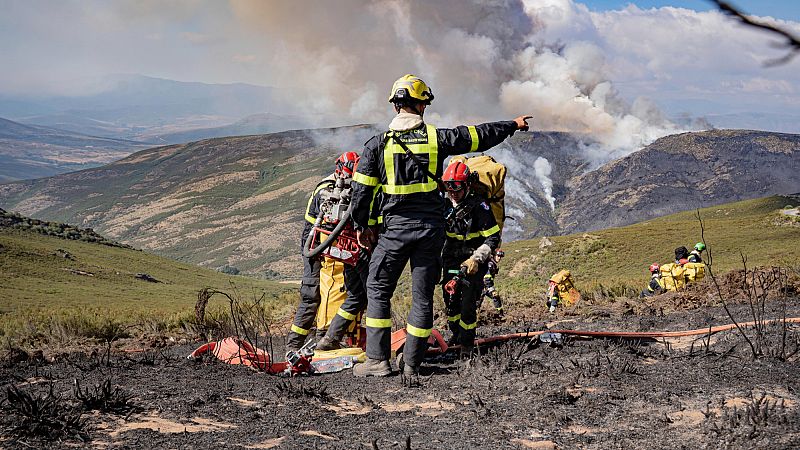No, Spain’s wildfires were not started on purpose to clear land for construction projects

Spain is facing its worst wildfire season in 30 years. Fuelled by the severe summer heatwave, these fires have already destroyed over 150,000 hectares of land, mainly in the regions of Galicia and Castilla y León in the northwest.
Firefighters are battling the blazes with support from military forces deployed by the Spanish government. Meanwhile, around 30,000 people have been evacuated, with residents urged to wear face masks and stay indoors to avoid the smoke and ash.
As the blaze ravages forests and natural areas, it often clears vegetation and makes land easier and cheaper to develop. Because of this, a social media wave of disinformation content is claiming that the wildfires were caused on purpose, to clear land for construction projects.
Misleading projects in Canarias and Madrid
Viral posts suggest that the wildfires in Spain were deliberately set so developers can later build on the burned land, but this is untrue. Spain’s Law of Montes explicitly bans changing the use of forest land for 30 years after a fire to prevent intentional burning for profit.
The law was tightened in 2006 under Spain’s prime minister at the time, José Luis Rodríguez Zapatero (PSOE), to enforce the 30-year ban nationwide and only allowed one exception: if the change of use (like turning forest into urban land) was already approved before the fire.
In 2015, under former PM Mariano Rajoy (PP), a second exception was added, but only for cases where a new law declares the change necessary for “reasons of overriding public interest”, like building essential infrastructure. But it’s a complex that requires parliamentary or regional legislation, not something a private developer can trigger independently.
So, as per these legal safeguards, fires do not open the door to real estate development because new projects cannot bypass the 30-year restriction.
The supposed “loopholes” circulated online (like the idea that selling the land or burning it allows instant requalification) do not exist in the law.
Any project seeking to change land use must have been planned and approved long before a fire, or it must go through lengthy legal and environmental procedures, making arson an ineffective and illegal path to development.
In that same vein, another set of posts claims that the August 2025 fires in Tarifa (Cádiz, Andalusia) were started to enable coastal urban developments, but the facts don’t support this.
Viral claims, including headlines from established Spanish media, like El Español, mention “more than eight projects” and suggest the fires would allow land to be reclassified for construction.
The fire near Atlanterra in Tarifa indeed passed close to two housing developments, but the plots were already designated as urban land in the local planning documents (PGOU) and were not damaged by the fire.
Another rumour points to a luxury tourism project in El Lentiscal, but this site is inside the Parque Natural del Estrecho, and is far from the burned area. It also faces strict environmental protections, with no application for construction submitted as of August 2025.
Another claim says that the wildfire in Tres Cantos, a neighbourhood in the Madrid district, was linked to a nearby solar farm project – the GR Mandarín photovoltaic project.
But in reality, the solar plant’s panels will be installed in Soto del Real, a different municipality 12 km from the burned area, while Tres Cantos only hosts part of the transmission line.
The project had already secured its environmental clearance in May 2023 and received its construction permit from the Ministry for the Ecological Transition in November 2024, months before the fire.
The posts also misrepresent an early 2022 draft of the project to claim that Tres Cantos was the planned installation site, ignoring the updated, approved plans that show otherwise.
But sources from the Tres Cantos city council told Spanish fact-checker Maldita.es that the municipality has no additional permits pending for the project, which means that construction could proceed regardless of the local fires.
Today

